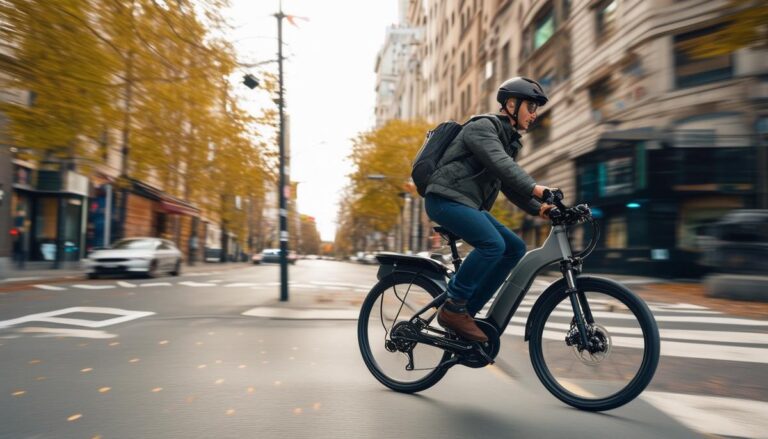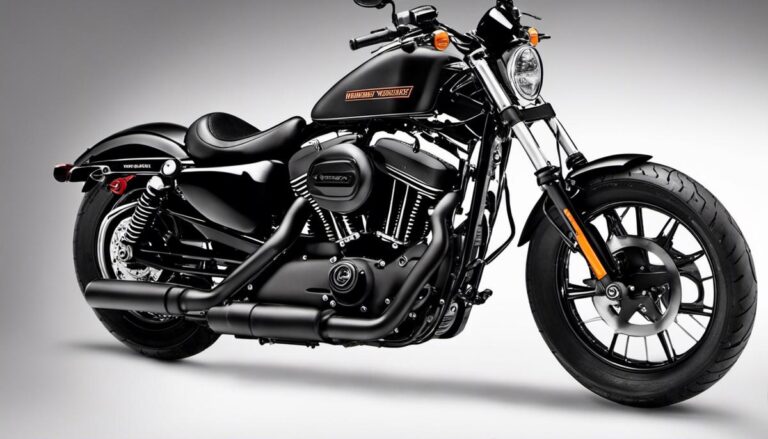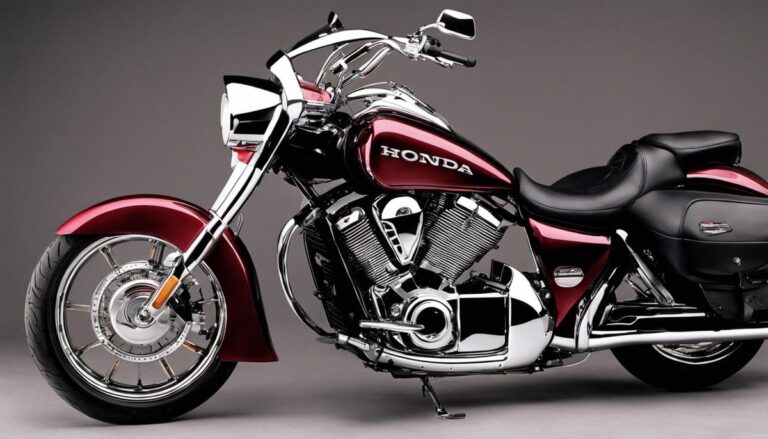Indian Scout Bobber vs Triumph Bonneville Bobber Black: An In-depth Review
Many motorcycle enthusiasts find themselves torn between two magnificent machines: the Indian Scout Bobber and the Triumph Bonneville Bobber Black. Both bikes display an enticing blend of style, performance, and time-tested reputation, that sets them apart. However, the ultimate decision often boils down to specific details. This comprehensive review aims to shed light on various aspects of both motorcycles, ranging from the technical specifications and design, to performance indicators, comfort considerations, and pricing. It also brings to the table authentic feedback from owners, offering a real-world perspective on how these bikes measure up.
Description and Specifications
Indian Scout Bobber: A Blend of Classic and Modern
Boasting a rich heritage since the early 1900s, the Indian Scout Bobber bleeds classic American style with its stripped-down, minimalist design. The bike sports a sleek tank design, knobbly tires, and bar-end mirrors that enhance its rugged persona. Its low-slung, tench leather seat sits at a height of 649mm, making it comfortable for riders of varying heights while the bare-bones rear fender showcases the chunky 150mm-wide rear tire which brings out the beauty of its bobbed style.
The Scout Bobber is powered by a liquid-cooled, 1133cc V-twin engine that generates 94 horsepower and 97Nm of peak torque. This power is managed via a 6-speed gearbox, providing an even spread of power across gears for a smooth and responsive ride. The weight of the bike is around 255kg, which combined with a low center of gravity, ensures stability on the road.
Among modern incentives, the Scout Bobber features a digital tachometer, odometer, trip meter, and engine temperature gauge embedded in its minimalistic single-pod instrument cluster. Color options include Thunder Black, Bronze Smoke, and Sagebrush Smoke.
Triumph Bonneville Bobber Black: Edgy Retro Appeal
Contrasting with the American energy of the Scout Bobber, the Triumph Bonneville Bobber Black offers British sophistication coupled with a dark and moody persona. The bike retains the classic bobber design of a single-seat setup, hardtail look, and wide flat handlebars. However, the Black edition further enhances this nostalgic appeal by featuring everything in black: the exhaust, engine cover, wheel rims, headlamp cover, and even the rearview mirrors.
Seat height is slightly higher than the Scout Bobber at 690mm, which may favor taller riders. What sets the Bonneville Bobber Black apart is its heavier weight of around 237.5kg, which suggests a more planted feel on the road.
The Bonneville Bobber Black is powered by a larger, 1200cc parallel-twin engine that produces 76 horsepower and 106Nm of torque. This power is transferred to the ground via a 6-speed gearbox, ensuring a capable performance whether commuting in the city or cruising on the highway.
As for tech, the bike presents a classic analog-digital combo meter which displays gear position, fuel range, and current and average fuel consumption, adding a touch of modernity to its retro persona. It also offers two riding modes – Road and Rain, for added control in varying conditions. Color choices are limited to Jet Black and Matt Jet Black, both conveying its angst-ridden aesthetic.
Indian Scout Bobber vs Triumph Bonneville Bobber Black: A Head-to-Head Comparison
Deciding between the American-made Indian Scout Bobber and the British Triumph Bonneville Bobber Black can be a tough call, relatively dependent on personal taste. Both motorcycles are vintage charms in their own unique ways, each embodying specific design language. The American Scout Bobber is distinguished by its modern and sleek aesthetics, equipped with a V-twin engine and featuring a lower seat height. On the flip side, the British Bonneville Bobber Black, heavier in weight, basks in a darker, broodier appeal, and sports a traditional parallel-twin engine design synonymous with the classic bobber layout. Despite their differences, both motorcycles hold true to the essential bobber design – a stripped-down appearance, hardtail look and only a single-seat setup. Additionally, they both come with modern elements like digital displays and selectable ride modes. Power figures and engine capacities differ, though both guarantee a captivating ride. The choice, therefore, is a matter of personal style and brand preference.

Performance and Handling
Indian Scout Bobber: A Deep Dive into Performance and Handling
The Indian Scout Bobber comes with a robust 1133cc V-twin engine, renowned for its exceptional power. Clocking an impressive 100 horsepower and 72 lb-ft of torque, the Scout Bobber stands out in the mid-size cruiser category. This bike is also fitted with dependable 298 mm disc brakes at both ends, enhancing the rider’s control and safety features. The motorcycle’s ABS feature further reinforces rider safety.
Adopting a low-slung and minimalist design, the Scout Bobber performs well in terms of high-speed maneuverability. It delivers a firm, heavy ride that some might find appealing because it adds to the traditional bobber-like feel. The handling is firm and straightforward, with the wide handlebars promoting stability when turning corners.
However, the Scout Bobber does have a few setbacks. Some riders may find the rear suspension quite firm, which could affect comfort levels during long journeys. The lack of a windscreen might also cause discomfort during high-speed rides on highways.
Triumph Bonneville Bobber Black: Performance and Handling
The Triumph Bonneville Bobber Black is no less when it comes to performance. It is powered by a 1200cc parallel-twin engine that puts out 77 horsepower and 78 lb-ft of torque. While the horsepower figure is less than that of the Scout Bobber, the engine’s torque is spread evenly across the rev range, offering good pulling power.
The bike features dual-disc front brakes with Brembo 4-piston calipers, providing strong and controllable stopping power. To help manage this power, it comes equipped with ride-by-wire technology, two riding modes (Road and Rain), switchable traction control, and ABS.
As for handling, the bike is nimble despite its considerable heft. Thanks to its low center of gravity and well-balanced chassis, it offers impressive cornering ability. The Black’s extra-wide front wheel and commanding riding stance make for a steady and controlled ride. One downside could be the bike’s relatively high seat, which might make it less ideal for shorter riders.
In the world of motorcycles, two models that often draw comparisons are the Indian Scout Bobber and the Triumph Bonneville Bobber Black. The Triumph caters more towards contemporary influences, weaving modern technological advancements into its classic design. Conversely, the Scout Bobber carries a stronger inclination towards conventional aesthetics, morphing into a magnet for avid enthusiasts who relish a traditional bobber experience. Both these machines boast impressive power, paired with handling abilities that are nothing short of stellar. Ultimately, the decision boils down to individual style preferences and personal tastes.

Comfort and Convenience
Assessing Riding Comfort: Comparing the Indian Scout Bobber and the Triumph Bonneville Bobber Black
The level of comfort offered by these two bobbers varies quite noticeably. Each motorcycle comes fitted with unique features that contribute differently to the overall riding experience, influencing rider comfort during extended journeys.
The Indian Scout Bobber notably comes with a well-padded leather seat, incorporating an exceptional shock-absorption system. Its low-slung handlebars paired with forward-set foot pegs skew towards a more aggressive riding posture. Although it presents a comfortable ride, some users might feel the pressure during longer trips due to this posture.
Shifting focus to the Triumph Bonneville Bobber Black, the entire structure leans towards a laid-back aura, courtesy of its higher handlebars and mid-positioned foot-pegs that endorse an upright riding stance. Although it comes with a harder seat compared to its counterpart, the Bonneville Bobber Black still ensures that comfort remains uncompromised, even during extensive riding sessions.
Suspension and ride quality: Indian Scout Bobber vs Triumph Bonneville Bobber Black
The Indian Scout Bobber comes equipped with cartridge fork front suspensions and dual shocks at the rear, which extend only 2-inches, thus offering stiff rides on bumpy roads. It may not be suitable for off-roading or heavy-duty tours because of its low ground clearance, paving the way for more city cruising or highway touring.
On the other hand, the Triumph Bonneville Bobber Black boasts of its signature Showa forks in the front and a monoshock at the rear with linkage. With a higher ground clearance than the Indian Scout, the Bonneville Bobber Black promises comfortable rides cradling you over potholes and rough terrains.
Convenience Features: Indian Scout Bobber vs Triumph Bonneville Bobber Black
As for the convenience features offered, both motorcycles bring a wealth of modern features to the table. The Indian Scout Bobber offers a modern, digital display that shows relevant ride data neatly and clearly. However, it lacks practical storage space, making it a little less convenient for long-distance touring or everyday usage.
The Triumph Bonneville Bobber Black, on the other hand, provides riders with a bit more convenience. Besides its neat analogue speedometer, it incorporates a digital display that comes with a gear indicator, rev counter, range to empty, fuel level, average and current MPG, a clock, and access to turn off the ABS feature. Like the Scout Bobber, storage options are limited, but it offers a tachometer, a feature Scout Bobber lacks.
In wrapping up, both the Indian Scout Bobber and Triumph Bonneville Bobber Black have their respective strengths, each excelling in different areas concerning comfort and convenience. The ultimate selection should be guided by your individual preferences, such as riding posture, the quality of suspension and other features that you consider essential for your riding experience.

Pricing and Value for Money
Indian Scout Bobber Vs Triumph Bonneville Bobber Black: A Consideration of the Price and Value
Cost Comparison: Indian Scout Bobber Versus Triumph Bonneville Bobber Black
In the American market, the Indian Scout Bobber could cost you approximately $11,999, whereas the Triumph Bonneville Bobber Black comes at a slightly higher price of around $13,400. Nevertheless, these prices are subject to fluctuation based on the dealership location, additional features on the bike, and even depending on the state in which you plan to buy, where diverse registration and other fees may be applied.
When considering worldwide prices, variations also exist. Taking the UK as an example, the Indian Scout Bobber is available starting from £11,899, while the Triumph Bonneville Bobber Black can be acquired from a starting price of £12,300.
Please bear in mind that these figures represent the base prices. Opting for extras or custom finishes could considerably increase the final amount.
Features: Indian Scout Bobber Vs Triumph Bonneville Bobber Black
The value-for-money propositions of the Indian Scout Bobber and Triumph Bonneville Bobber Black typically depend on what the rider values more: performance or style.
For performance seekers, the Indian Scout Bobber offers a punchy liquid-cooled 1133cc V-twin engine with a peak torque of 97Nm. The straight-line power is smooth and quick with a respectable top speed and nimble handling.
On the other hand, Triumph Bonneville Bobber Black appeals more to retro-style lovers. It’s fitted with a 1200cc engine producing 77 horses and 106Nm of torque. While not as performance-oriented as its Indian counterpart, its triumph (no pun intended) lies in its classic aesthetic. From the chunky front tyre to the single clock instrumentation, every component is a nod to the past.
Value For Money: A Closer Look
Choosing between the Indian Scout Bobber and the Triumph Bonneville Bobber Black might be a challenging task. On the surface, the Indian Scout Bobber seems to be the more affordable option despite being equally powerful. On the other hand, the value the Triumph Bonneville Bobber Black provides lies in its iconic aesthetics and well-rounded features.
Both motorcycles come equipped with tandard features like ABS for enhanced safety. In addition, their reputations for reliability and high resale values underscore their status as value-for-money machines.
Beyond comparing base costs, one should also keep in mind the differing maintenance and ownership expenses that come with each brand. For instance, maintaining a Triumph motorcycle can be costlier due to its more complex machinery, while Indian motorcycles are considered more straightforward and less expensive to maintain.
Ultimately, the choice between the Indian Scout Bobber and the Triumph Bonneville Bobber Black comes down to personal preferences: whether the preference leans towards the Scout’s contemporary styling and raw power, or the combination of nostalgia, versatility, and iconic branding offered by the Bonneville. For potential buyers, a test ride and a comprehensive comparison of features against price are key steps prior to making a final decision.

Owner Reviews and Feedback
Owner Insights: Riding the Indian Scout Bobber
Owners of the Indian Scout Bobber have often voiced their admiration for the bike’s fusion of old-school appeal and modern capabilities. Propelled by a potent 1133cc V-twin engine, the Scout is touted for its lively, 100 horsepower and 72 lb-ft torque output. This gives it impressive initial acceleration, a sturdy mid-range, and ample power even in top gear, which can be unexpectedly lively for novice riders.
Despite its crafted, aggressive exterior, owners find the Scout Bobber surprisingly comfortable to ride. Its stopping ability has also been applauded, with particular praise directed towards its standard front and rear disc brakes, complete with ABS.
However, a few owners have raised issues about the Scout Bobber. Some noted the lack of wind protection as a shortcoming, particularly for highway journeys. Additionally, the 3.3-gallon fuel tank is seen as limiting for those who are keen on long-distance travels.
Owner Reviews: Triumph Bonneville Bobber Black
Owners of the Triumph Bonneville Bobber Black have highlighted its smooth, refined ride quality. Powered by a 1200cc High Torque engine, the Bonneville Bobber Black delivers power smoothly with plenty of torque low down and throughout the mid-range, with users reporting significantly fewer vibrations than the Indian Scout Bobber.
Its dual disk front brakes with standard ABS, praised for their superb stopping power. The switchable traction control for safety and the ride-by-wire system with two riding modes- Rain and Road, have also been appreciated by users.
However, there have been a few criticisms. Some users find the ride somewhat harsh on bumpier roads due to its hardtail look with a hidden rear monoshock. There have also been complaints about the comfort of the seat during longer rides.
Overall, owners of both bikes are broadly satisfied, with the Indian Scout Bobber often regarded as more of an adrenaline-pumping ride, whereas the Triumph Bonneville Bobber Black revered for its smooth, refined performance. However, personal preference will decide the better choice. Potential buyers should consider comfort, ride quality, the type of riding they’ll primarily be doing, and their personal aesthetics preference when deciding between the two motorcycles.

Every motorcycle brings its unique flavor and charisma, and both Indian Scout Bobber and Triumph Bonneville Bobber Black are no exception. They stand as distinguished symbols of engineering craftsmanship, each striking a balance between aesthetics, performance, and comfort. While the Indian leans towards classic American styling and raw power, the Triumph leverages its British roots to offer a refined riding experience. Your personal preference, riding style, convenience requirements, and budget will ultimately guide which bike earns your favor. Nevertheless, armed with this detailed analysis, you are well-equipped to make an informed decision and enjoy the rewarding journey that only a well-chosen motorcycle can offer.







